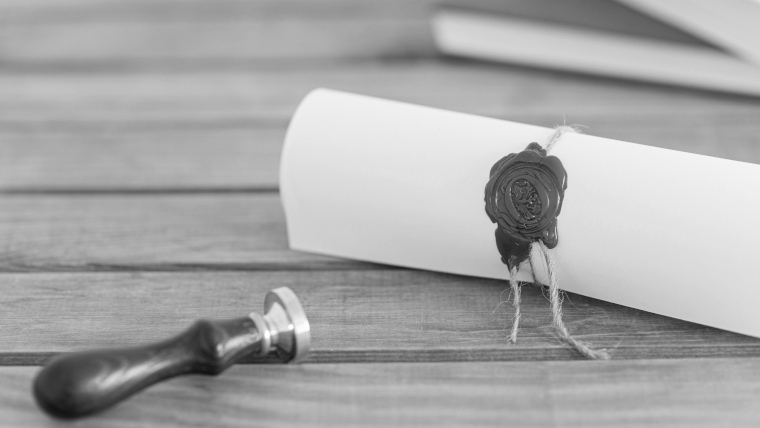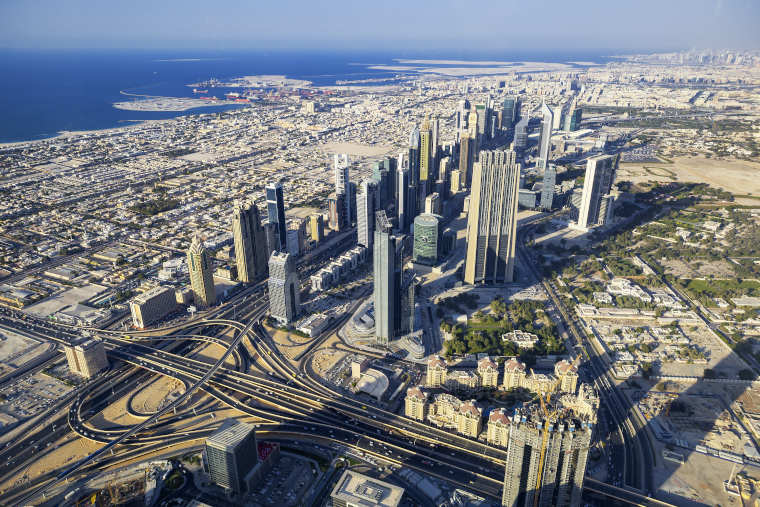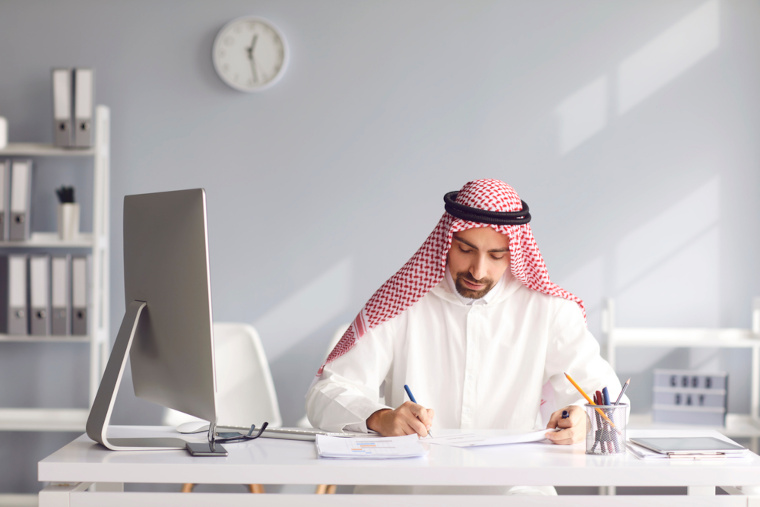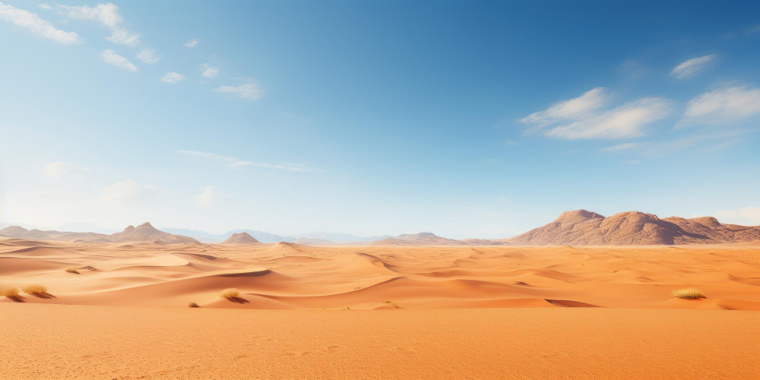

12.11.2025
1347
What is the history of the UAE? Everything before the 19th century can be considered the period of tribes who lived and fought in the territory of modern emirates. What happened before the middle of the 20th century were merely prerequisites for the emergence of one of the richest countries in the world.
How did it develop? The emirates owe their economic prosperity to oil, the fortunate period of the state's emergence, and the energy crisis. But today, the UAE leadership is thinking about diversifying the country’s income. It is trying to get off the “oil needle”.
The creation of the UAE is a centuries-long path to the development of an amazing country. It is the story of the emergence of a country that has gone through millennia of development and transformations. Thanks to perseverance, hard work and favourable circumstances, the history of the country and some interesting facts of its life that impress the whole world, the UAE has become a model of progress for all humanity. How was this country formed?
The history of UAE development begins in the 3rd–1st centuries BC, when the ancient kingdom of Dilmun existed on these lands. At the turn of the 2nd and 1st millennia BC, Chaldean nomadic tribes came there.
An important stage in the formation of statehood in the Persian Gulf region was the migration of Semitic tribes from the centre of the peninsula at the end of the 1st millennium BC. They created the powerful state of Characene, which reached its zenith in the second century AD. Despite the rapid collapse of this formation, it was then that Arab dominance in the region began.
The history of the UAE changed dramatically in the 7th century, when fragmented principalities united into a powerful Arab Caliphate. Islam became the dominant religion, displacing Christianity, which had previously been professed by most local residents.
 Image source: nikitabuida / freepik.com
Image source: nikitabuida / freepik.com
This period is characterised by significant economic and trade growth, but the disunity of provinces led to a new fragmentation of territories into independent principalities. Some of them came under the influence of neighbouring powers. By the 13th century, Oman and Iran were the main competitors for control over these lands.
The Mongol invasion and destruction of Baghdad prompted local rulers to create an impregnable fortress capital on an island, thus the Hormuz state was born. In the late Middle Ages, the history of exploration and settlement of UAE territory was marked by the region's transformation into one of the richest principalities due to developed seafaring and trade.
The year 1498 was marked by the discovery of a short route from Europe to India via the Red Sea, which turned the Persian Gulf region into an object of claims by the major powers of that time.
The history of the UAE in the early 16th century is marked by the establishment of Portuguese dominance over the maritime route in the Mediterranean. The governor subjected all coastal settlements to devastation, and the waters were guarded by an impressive flotilla of formidable warships. This ensured Portugal's monopoly position in trade relations with India and the states of Southeast Asia, bringing colossal revenues.
The Turkish Empire, seeking to undermine Portuguese influence, supported the uprisings of local tribes. However, Arab tribes did not limit themselves to attacks on foreigners. As a result of the confrontation between mighty powers, the unified Hormuz state disintegrated into separate domains.
A key moment in the struggle for independence of the future UAE was the uprising of the Qawasim tribal union. With a strong and experienced fleet, the union expanded its influence to the entire coast and advanced hundreds of kilometres deep into the peninsula.
The 17th century was marked by the British Empire's entry into the struggle for the region. Combining forceful methods and diplomacy, the British displaced the Portuguese and established monopoly control over the territories through the East India Company.
The coastal zone of the Persian Gulf formally belonged to the Ottomans until the 1800s. But in fact, the poor coastal settlements (except for the city of Kuwait), inhabited by fishermen and pearl divers, were governed by autonomous tribal chiefs.
In the 1830s, Sheikh Turki bin Abdullah, the leader of the Wahhabis, launched military actions against them. This forced the Emir of Sharjah, Sultan bin Saqr, and the ruler of Ajman, Rashid bin Humaid, to seek compromise with him, whilst simultaneously restoring ties with the British for support against the Wahhabi movement. These interactions with the "sea lords" had their own backstory.
In early 1820, the British Crown signed agreements with the rulers of Sharjah, Umm Al Quwain, Imam, Abu Dhabi, Dubai, Ras Al Khaimah and Bahrain to stop piracy and slave trade on the sea route between Arabia and India.
In 1835, the parties signed the historic Treaty with the Trucial States. It obliged local rulers to cease hostilities at sea during the pearl harvesting period. From that moment, the coastal zone of the southern Persian Gulf began to be called the Coast of Truce, or Trucial Oman.
The British Crown initially avoided direct confrontation with the Wahhabi movement, but the situation changed dramatically by 1850. After another Wahhabi attack, the British fleet was sent to support the ruler of Bahrain, and in 1861 he recognised the protectorate of Great Britain.
The leaders of neighbouring coastal principalities had previously concluded similar treaties. British military garrisons were stationed in these territories. Governance was carried out by an appointed British political representative.
In 1892, the British Crown initiated the signing of Special Treaties with local sheikhs, which limited their foreign policy activities. The documents prohibited rulers and their heirs from signing agreements, transferring or selling territories, or allowing their occupation by foreign powers without London's approval.
 Image source: freepik / freepik.com
Image source: freepik / freepik.com
However, the desire for consolidation, due to a common geographical space, economic interconnections, and similar tribal structure, always existed among the emirs of the region.
In 1905, the Emir of Abu Dhabi, Zayed, organised a meeting of all rulers of coastal principalities to resolve border disputes. The next such summit took place half a century later.
In 1952, the British government attempted to unite the seven coastal emirates by establishing the Council of Treaty States. This initiative was implemented at the request of the Petroleum Concessions Limited oil company, which sought to obtain a single concession for the development of the deposits along the entire coast of Trucial Oman, avoiding the need to conclude separate contracts with each emirate.
The transformation of the global order and the collapse of the imperialist system changed the balance of power. In the Middle East, the ideas of pan-Arabism, embodied in the movements of Nasserists and Baathists, were strengthened. The political worldview of the Gulf population was evolving. The ruling families feared losing control over the region, as happened in Yemen, where the monarchical dynasty was destroyed.
In 1966, a young representative of the Al Nahyan dynasty, Sheikh Zayed bin Sultan, took the reins of power in Abu Dhabi. He proposed the concept of integration as a tool to strengthen the positions of the leadership of neighbouring tribes.
"Unity is the key to power, the path to self-affirmation and universal prosperity. Fragmentation leads only to decline, and weak states are doomed in modern realities", proclaimed Sheikh Zayed. The consolidation of seven emirates, according to his vision, should have become the basis of pan-Arab integration.
It is important to note that Britain had by that time announced the withdrawal of military contingent from the territory of the emirates and the termination of the protectorate by 1971. A year later, Sheikh Zayed initiated the creation of a federation of South Gulf states, responsible for defence and international relations.
February 1968 was marked by an important event — the emirates of Abu Dhabi and Dubai announced their unification. Qatar and Bahrain were also invited to participate in the creation of a single state. The negotiation process between the emirates continued from 1968 to 1971. Three versions of the federal constitution for the new state formation were considered.
The history of Dubai, UAE marks a key date — December 1, 1971, when the treaties on the British protectorate over the emirates lost their force, and Sheikh Zayed, representing the interests of all emirs, signed a friendship treaty with Great Britain.
Political agent Geoffrey Arthur signed the document from the other side. On December 2, 1971, Sheikh Zayed, together with the rulers of six other emirates, proclaimed the creation of a "unique union of states". The attainment of independence coincided with the world energy crisis of 1973.
Due to high oil prices caused by this crisis, and the sound economic policy of the new leadership, the UAE quickly achieved economic prosperity.
Moreover, Dubai became a key centre of global gold trade, controlling a quarter of the market. And over the past ten years, it has become a major base for the sale and processing of diamonds. Dubai successfully competes with the Netherlands, the traditional world leader in precious stones trade.
The history of the UAE oil and gas industry shows that independent development of Dubai and Abu Dhabi was possible, but the key factor for success was their interaction: Abu Dhabi produces oil, while Dubai ensures its realisation.
The phenomenal economic growth of the UAE is largely due to the perfect balance between the volumes of oil production in Abu Dhabi, the total population of the confederation, and the size of the territories, allowing all needs to be efficiently met.
 Image source: vwalakte / freepik.com
Image source: vwalakte / freepik.com
The history of the UAE before and after the discovery of oil demonstrates dramatic changes. In the 1970s–80s, having gained independence, the emirates showed an exclusively consumerist approach: residents sought to acquire the most expensive and prestigious imported goods, without caring about the development of production.
However, scientific forecasts indicated: oil reserves in the desert are exhaustible. Although this will not happen sooner than 2040, it will be irreversible. Economic diversification and the search for alternative sources of income were required. The government began to urgently seek new directions of development. The first proposal was tourism, which back then seemed absurd. After all, what could be shown to the guests besides sands and camels?
The supporters of UAE development through international tourism and integration into the global economy were far-sighted. In the seventies, this was precisely the course chosen by the founder of modern Dubai, Sheikh Rashid bin Saeed Al Maktoum. Unlike Abu Dhabi, his emirate did not possess significant oil deposits, so the ruler created a different development strategy.
According to historical sources, he is credited with the initiative to create a large-scale port complex in the small settlement of Jebel Ali, located 35 kilometres away from the emirate's capital. His close advisors opposed the project, but the visionary ruler insisted on the implementation of it. He viewed the port as a key element in turning Dubai into a global transport hub.
The emir's main fear was the depletion of oil reserves and the population's return to a nomadic way of life. He often repeated: "My ancestor wandered on a camel, my father also on a camel, I drive a Mercedes, my heir drives a Land Rover, his descendant will drive a Land Rover, but the next generation will return to camels".
The dynasty's continuator, the ruler's son Mohammed bin Rashid Al Maktoum, also chose the path of international integration. It was Sheikh Mo, as he is informally called, who became the architect of Dubai's transformation. Under his leadership, ultra-modern skyscrapers grew, creating the phenomenon of an Arabian metropolis.
To questions about the feasibility of large-scale construction, the visionary answered: "Create infrastructure and people will follow". Time has confirmed that he was right.
Currently, the United Arab Emirates is among the top world tourist destinations, and in 2021 the emirate of Dubai welcomed about one and a half million guests monthly.
The state controls 5.6% of the world's explored oil reserves and 3% of gas deposits, and the GDP per capita reaches 70 thousand dollars, the sixth position in the world ranking.
The oil sector generates about a third of the UAE's GDP, but by 2030 it is planned to reduce this figure to 20%. Since the early 2000s, the UAE has been actively diversifying its economy by developing new industries. The country is improving petrochemicals, construction, metallurgy, shipbuilding, the agricultural sector and fishing. The service sector plays a key role (banking, commerce and the tourism industry).
 Image source: Studio Romantic / shutterstock.com
Image source: Studio Romantic / shutterstock.com
The UAE successfully attracts large-scale investments in various industries, with the main income formed by financial and trade operations. Almost all international corporations have opened their offices there.
The state is developing the space industry and implementing the concept of smart cities, consistently reducing dependence on oil revenues.
The native residents of Dubai have access to broad social privileges. Each newborn boy is allocated a land plot of 0.5 hectares and the opportunity to get a preferential loan for construction. The loan is provided for a thirty-year term at a minimal 2%. The owner can use the plot at his discretion, including renting it out.
Local citizens are guaranteed free healthcare and education. Students of Islamic universities receive a generous scholarship of $2000 and dormitory accommodation. After 20 years of work, a pension of 80% of earnings is assigned. There is no income tax in the emirate, and the 5% VAT was introduced just recently.
The wealth of the ruling dynasty is impressive. According to Business Insider, Sheikh Mohammed bin Rashid's fortune exceeds $4 billion. The family owns elite real estate, including the British estate of Longcross worth $99 million.
Behind the outward well-being of the Dubai ruler's family lies a dramatic story. Haya bint Al Hussein, the sixth wife of Sheikh Mohammed, personified the modern East. An Oxford graduate, race car driver and public figure, she oversaw educational and medical initiatives.
In 2019, after the emir's suspicions of her having an affair with a bodyguard, Haya fled with her children to Europe, taking $46 million. She filed for divorce, which provoked an angry reaction from the sheikh. On social media, he published poems hinting at indifference to the fate of his former lover.
In 2021, the emir intended to acquire the luxurious Parkwood estate for $41 million, from where Haya's residence could be seen. The ex-wife perceived this as a threat of persecution and feared for the safety of her children.
However, Sheikh Mohammed bin Rashid Al Maktoum suddenly abandoned plans to acquire Parkwood. According to the conclusion of Justice Andrew McFarlane, the process of discussing the deal "exerted significant psychological pressure on the ruler's former wife".
But there were other dramatic events in the family before. In 2018, the ruler's daughter, Princess Latifa, failed in her attempt to escape to India by sea, as she was intercepted by a special forces unit.
During the detention, she resisted, causing serious injury to one of the soldiers. After the administration of sedatives, the princess lost consciousness and woke up back in the emirate. These details became known to the public via secret video recordings made by Latifa a year after the incident.
The princess spoke about the tragic fate of her older sister, who died in captivity after an unsuccessful attempt to leave the country. "My parent is the embodiment of cruelty, pure evil. Many victims are on his conscience", claimed Latifa. According to her testimony, women of the royal family, despite their wealth, live under strict control. They are forbidden to drive a car, and each is accompanied by a driver-informant. Education and travel are possible only with the permission of the head of the family.
Surprisingly, falcons are not indigenous inhabitants of the sands of Arabia. The noble birds crossed those places during seasonal migrations from Eurasia to African winter grounds. In Arab culture, the falcon embodies power, nobility and indomitability of spirit. That is why this bird holds a special place in the country's culture
The history of the UAE dirham is closely linked to the image of the falcon. It adorns not only the banknotes of the national currency, but also the state emblem, where the seven tail feathers symbolise the seven united emirates. Veneration of the falcon is reflected in poetry, music and national dances. Even the traditional Arab headdress in its outline resembles the profile of this majestic bird.
Falconry there is a true art, requiring round-the-clock interaction with the bird for its taming.
The rulers of Arab emirates are among the elite of the world's rich, demonstrating incredible projects. Sheikh Hamad became famous for creating a unique desert irrigation system. The peculiarity is not in the irrigation itself, but in its execution: the canals form gigantic letters, folding into the name "HAMAD", which can be seen from space.
Historically, the UAE was a poor country with a simple diet that consisted mostly of rice, dates, flatbreads, camel milk, and occasionally goat and lamb meat. Now a gastronomic diversity flourishes there, combining culinary traditions of India, Polynesia, Europe and Arabia.
Must-try dishes include:
In the Emirates, there are many mysterious places shrouded in legends. One of them is the deserted village of Al Madam, located between the metropolises of Dubai and Sharjah. You can visit this place on any transport, although an off-road vehicle is preferable.
 Image source: nuraghies / freepik.com
Image source: nuraghies / freepik.com
The settlement includes several residential buildings, a central square and a miniature mosque. The reasons for the exodus of residents remain a mystery. Local legend has it that the population left their homes due to the appearance of supernatural beings — jinns.
Historically, the region was famous for pearl harvesting. In the emirate of Ras Al Khaimah, a unique enterprise operates, recreated by Abdullah Rashed Al Suwaidi. He founded the farm 18 years ago, continuing the traditions of his grandfather, a famous pearl seeker. All the secrets of this ancient craft are revealed during educational tours.
The United Arab Emirates has transformed from a group of not-so-wealthy coastal principalities into a prosperous modern country over just 50 years. Wise investment of oil revenues allowed for the creation of attractions that today draw tourists from all over the world.
The country has set many world records: the Burj Khalifa skyscraper, the grand fountains and Dubai Mall shopping complex, extreme attractions like Formula Rossa in Ferrari World, Jebel Ali port, the majestic Burj Al Arab, the luxurious Emirates Palace, unique decorative elements of Sheikh Zayed Mosque, and innovative Dubai Metro. These are just some of the impressive achievements of the emirates.
Over the past decades, the demographic structure has also changed: now native Arabs make up only a tenth of the population and the rest are labour migrants.
The story of Princess Latifa provoked public discussion about women's rights in the UAE. As a result, important reforms were initiated: gender discrimination was banned and the norm of wives' subordination to husbands was abolished.
In 2020, authorities toughened punishment for "honour killings". Human rights defenders note that many women in the region become victims of reprisal for violating traditions, fleeing from family, or unauthorised relationships with men.
Thanks to the dominance of the British Crown, the region avoided the radical influence of Wahhabism during the period of its active expansion. This prevented the emergence of supporters of integration with neighbouring states, although diplomatic relations remained constructive.
Colossal reserves of hydrocarbons formed the desire to maintain independent control over resources. As a result, a country was formed that was inferior in influence, but superior in wealth even to the custodians of Islamic shrines.
Despite certain contradictions and challenges, the Emirates demonstrate dynamic development and are considered the most progressive country in the region. Religious tolerance is practised there and social transformations are carried out to overcome inequality and diversify the economy. The UAE development model can serve as a benchmark for other resource-dependent states.
The flag of the United Arab Emirates was approved on December 2, 1971, the day of the proclamation of the state's independence. Its design was developed by a young Emirati, Abdullah Mohammed Al Maainah. He created a banner with four pan-Arab colours:
The vertical red stripe is located at the hoist, and three horizontal stripes (green, white and black) make up the rest of the flag. Interestingly, the flag was originally different (red and white), but before the unification of the emirates, it was changed to the modern version to reflect the unity of the new federation.
Article header image source: nuraghies / freepik.com